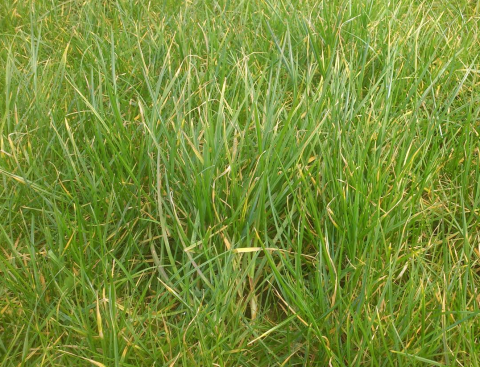By Jamie McCoy- Farming Connect Dairy Technical Officer
As grass has continued to grow over the winter, it is important to take steps to preserve sward quality and ensure better silage.
Conditions during the winter of 2015, although wet, have been generally warm, which has led to continued grass growth. With higher pasture covers on paddocks designated for silage there is also dead matter at the sward base, which ideally should be removed before harvesting.
The dead matter at the base of a sward will reduce digestibility and therefore energy content of the silage and can support fungi, moulds and yeasts, which survive storage and affect silage aerobic stability at feed-out. In the worst cases this could lead to mycotoxins in the forage which compromise animal health and performance.
There is also some concern that once slurry is applied, muck contamination on the leaf will not reach the soil, but remain on the grass and affect silage fermentation quality with a high risk of butyric and ammonia in the silage. Livestock performance during the next winter feed-out period will be sacrificed if silage quality is not prioritised now, and any contaminated silages will be less aerobically stable once clamps are opened, leading to further waste.
Steps to prevent these issues can be taken now. Areas designated for silage should be grazed as soon as possible, before the paddocks are closed off. Leaving it too late will result in much reduced silage yields, so acting early is vital. Grazing with sheep or cattle will remove the leaves with winter kill, and reduce the height of the sward to allow slurry to reach the soil rather than sitting on the leaf.
At Gelli Aur, a Farming Connect Dairy Innovation Site, the aim is to make silage of a high D Value and reduce the need for bought in feed. In order to achieve this the grass must be excellent quality at the point of ensiling. Manager John Owen intends to take the opportunity to remove dead matter at this stage by allowing the later calving cows from the spring herd to graze the silage ground once as part of their first grazing rotation.
This will ensure that the first cut silage is made from completely fresh spring growth. Although this initial grazing is likely to reduce the yield of the first cut and push back the timing of harvest slightly, it does not represent a waste because the dry matter from the extra winter growth will have already been used by the herd this spring. Also, total waste in a lower quality silage would be much greater in the form of in-silo losses and as aerobic spoilage.
John says the initial grazing will also prevent slurry contamination issues. Slurry can be applied immediately post grazing, with a follow up of compound fertiliser if necessary.
Dave Davies of Silage Solutions Ltd added that in this time of cost pressures on the dairy industry its absolutely vital farmers think of the grass being cut for silage as a concentrate in a forage and the approach being taken by John at Gelli Aur will aim to maximise both energy and protein in every kg of silage produced.

